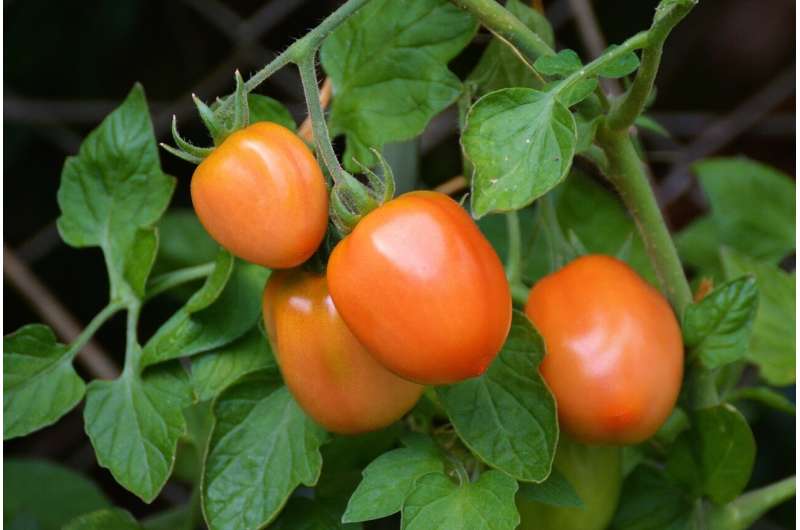This article has been reviewed according to Science X's editorial process and policies. Editors have highlighted the following attributes while ensuring the content's credibility:
fact-checked
peer-reviewed publication
trusted source
proofread
Plant warfare: The crucial function of Nrc proteins in tomato defense mechanisms

In the fascinating world of plant biology, a study recently featured on the cover of The Plant Journal has been turning heads. The research delves into the intricate defense mechanisms of tomatoes against the notorious bacterial pathogen Pseudomonas syringae pv. tomato (Pst). It's a classic tale of nature's arms race: As pathogens evolve to outsmart plant defenses, plants counter with more sophisticated immune responses.
The study is based on research conducted by scientists in Dr. Greg Martin's lab at the Boyce Thompson Institute (BTI). Central to the study are proteins called Nucleotide-binding leucine-rich repeat receptors (NLRs), the plant equivalent of immune system warriors. They recognize and respond to pathogen attacks, triggering a series of defense mechanisms. Among these are the helper NLRs, Nrc2 and Nrc3, which work in concert with the tomato NLR Prf and its partner kinase, Pto, in a well-orchestrated defense against Pst.
The groundbreaking aspect of this research lies in its exploration of the roles of Nrc2 and Nrc3. Using CRISPR technology, the scientists created tomato mutant plants lacking these NLRs. While these mutants appeared normal under typical conditions, they exhibited increased susceptibility to Pst, similar to plants lacking the Prf protein.
"This finding was pivotal, highlighting the indispensable role of Nrc2 and Nrc3 in the tomato immune response," noted Dr. Ning Zhang, a post-doctoral researcher at BTI and first author of the study.
One of the most intriguing outcomes of the research is understanding how Nrc2 and Nrc3 fit into the overall defense system. They seem to act upstream in the signaling cascade that leads to programmed cell death—a critical component of the plant's immune response. This places them as essential intermediaries of the complex network of plant immunity.
The attention to Zhang's research is a validation of its significance. "I'm thrilled that our discoveries on the workings of helper NLRs received prominent coverage in The Plant Journal," she remarked. "Our work sheds light on how plants defend themselves—a topic of immense importance in agriculture."
In essence, the research by Zhang and colleagues isn't just a story of scientific discovery; it's a roadmap for future innovations in crop resilience. "By unraveling the roles of helper NLRs like Nrc2 and Nrc3, we are a step closer to developing crops that can better withstand the challenges posed by pathogens, helping ensure food security and agricultural sustainability," said Zhang.
More information: Ning Zhang et al, Helper NLRs Nrc2 and Nrc3 act codependently with Prf/Pto and activate MAPK signaling to induce immunity in tomato, The Plant Journal (2023). DOI: 10.1111/tpj.16502
Journal information: The Plant Journal
Provided by Boyce Thompson Institute





















